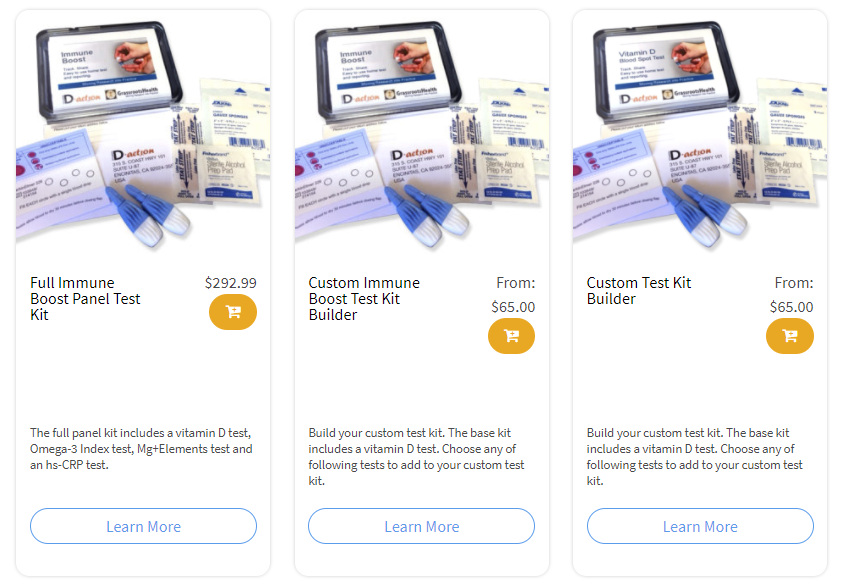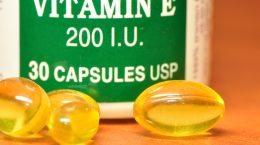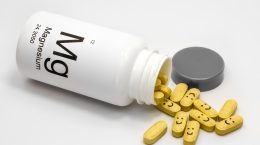Published on October 22, 2020
How to read a supplement label: Vitamin A
In a previous post we discussed the importance of paying attention to the serving size and suggested directions for use to ensure that you get the nutrients you expect from the supplements you are taking. We also previously looked at the information that is important on omega-3 labels, vitamin K labels, magnesium labels, and vitamin E labels. In today’s post we will look at the information on vitamin A supplement labels.
What is Vitamin A?
 Vitamin A is a fat-soluble vitamin that is important for normal vision, reproduction, and proper function of the immune system, heart, kidney, lungs, and other organs. There are two main types of vitamin A found in food and supplements – preformed vitamin A or retinol, including retinyl palmitate or retinyl acetate forms (found in meat, poultry, fish, and dairy), and provitamin A or beta-carotene (found in fruits, vegetables, and other plants) which needs to be converted to retinol for use.
Vitamin A is a fat-soluble vitamin that is important for normal vision, reproduction, and proper function of the immune system, heart, kidney, lungs, and other organs. There are two main types of vitamin A found in food and supplements – preformed vitamin A or retinol, including retinyl palmitate or retinyl acetate forms (found in meat, poultry, fish, and dairy), and provitamin A or beta-carotene (found in fruits, vegetables, and other plants) which needs to be converted to retinol for use.
There are three forms of vitamin A – retinol, retinal, and retinoic acid – that are active in the body and carry out the various functions of vitamin A. Retinol can be converted to retinal and retinal into retinoic acid.
Retinal is important for vision. In fact, vitamin A deficiency is a major cause of preventable blindness in the world. Retinoic acid is the form involved in regulating the growth and maturation of most cells, such as skin cells.
The form of vitamin A reported in your supplement is important to the amount of activity it has in the body. The most recent international standard of measure for vitamin A is retinol activity equivalents (RAE), which represent vitamin A activity as retinol. For example, it takes approximately twice as much supplemental beta-carotene as it does retinyl palmitate to form 1 microgram of retinol.
How does vitamin A appear on supplement labels?
Vitamin A is found in many multivitamins and is also available as a stand-alone supplement. Supplements can contain vitamin A as retinol, retinyl acetate, retinyl palmitate, or beta-carotene individually or in combination. The amount of vitamin A and the form(s) will appear on the label. The amount may be listed in micrograms (mcg) or international units (IU). On the example below, each serving consists of 4,500 mcg of vitamin A, of which 67% is beta-carotene and 33% is palmitate.
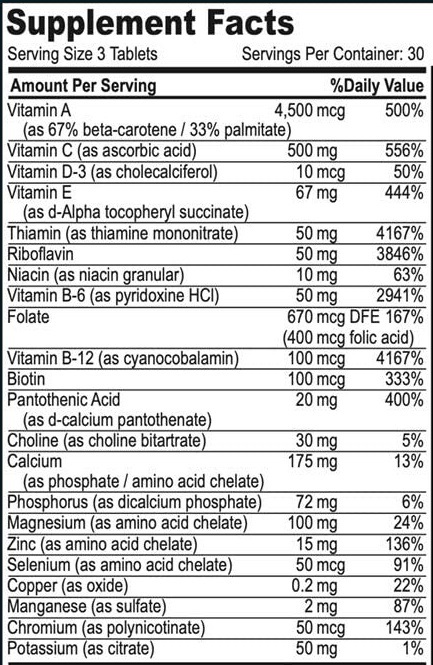
On the GrassrootsHealth questionnaire, we ask about the amount of vitamin A as retinol, retinyl palmitate, and/or retinyl acetate as well as whether or not you are taking supplemental vitamin A as beta-carotene. For participants in the Immune Boost Project, we ask about the amount of beta-carotene as well as the amount of total or combined vitamin A for those taking a supplement where the amounts for each individual form is not provided. In the example above, we would want 1,485 mcg for vitamin A as retinol, retinyl palmitate, or retinyl acetate (4,500 x 33%) and 3,015 mcg for vitamin A as beta carotene (4,500 x 67%) for those taking a full serving each day. If your supplement just provides a total amount for vitamin A and does not indicate the specific amount for each form, you can enter “9999” on the survey to indicate “Don’t Know” for the specific amounts of retinol, retinyl palmitate, retinyl acetate, and/or beta carotene (but still mark “yes” for taking supplemental beta-carotene if that form is included in your supplement).
Among GrassrootsHealth participants who have previously reported their supplemental intake for vitamin A, 39% report taking supplemental vitamin A in any form. We appreciate you taking the time to enter your supplemental vitamin A intake in the questionnaire! Keep an eye out for more on this series on what information to look for on supplement labels.
Could A Nutrient Deficiency be Hindering Your Body’s Ability to Fight Disease?
Nutrients work synergistically in order to carry out specific functions within the body. For example, we have recently discussed how different immune cells rely on a variety of nutrients, including vitamins D, C, B6, B12, zinc, and magnesium, in order to carry out their actions in an immune response. Without these necessary nutrients, immune function may be hindered.
Concerned specifically about your immune health? See if your immune system might be needing more vitamin D and other immune boosting nutrients by enrolling in the Immune Boost Project with the Full Immune Boost Panel (which includes tests for vitamin D, Omega-3 Index, magnesium, zinc, selenium, copper, and hsCRP), and get 10% off when you use coupon code BoostTen at checkout.
What Does it Take YOU to Get Your D to 40 ng/ml (100 nmol/L)?
Did you know your health could be greatly affected by making sure you have a vitamin D level of at least 40 ng/ml (100 nmol/L)? Help us help you.
STEP 1 – Do you know what your vitamin D level is? If not, be sure to test today to find out.
STEP 2 – Determine your target level. Are you at your target level? Experts recommend a level of at least 40-60 ng/ml (100-150 nmol/L).
STEP 3 – Need to boost your level? Use the D*calculator to see how much vitamin D it may take to reach your target. Opt for the Loading Dose for a quicker boost.
STEP 4 – Optimize how your body absorbs and utilizes vitamin D with co-nutrients and these simple steps.
STEP 5 – Re-Test! This is an important step to make sure you have reached your target level, and to ensure you are not taking too much! Re-testing after 3-4 months is recommended.
STEP 6 – Adjust, Repeat…
Give your immune system the nutrients it needs to support a healthy you and protect yourself from unnecessary diseases, especially COVID-19.
NEWS ALERT
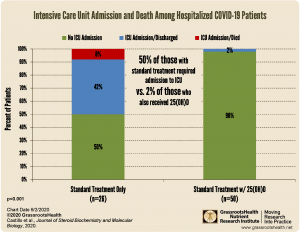 The first Randomized Controlled Trial on vitamin D and COVID-19 has shown a 96% lower risk of ICU admission for those receiving vitamin D (as 25(OH)D to quickly boost vitamin D blood levels) along with the standard treatment, compared to those receiving standard treatment alone.
The first Randomized Controlled Trial on vitamin D and COVID-19 has shown a 96% lower risk of ICU admission for those receiving vitamin D (as 25(OH)D to quickly boost vitamin D blood levels) along with the standard treatment, compared to those receiving standard treatment alone.
These results support many previous observational studies showing a relationship between vitamin D levels and intake and COVID-19 severity.
Review the Latest Nutrient Research for COVID-19
GrassrootsHealth Nutrient Research Institute has launched the new Immune Boost project with the use of our myData-myAnswers nutrient health system that nearly 15,000 people are already using for their health. Specific markers that influence immune health are suggested for testing as part of this project including:
- Vitamin D
- Omega-3 Index
- Essential elements magnesium, selenium, and zinc
- hsCRP
Our goal is to demonstrate how one can use the Nutrient Research Model established by Dr. Robert Heaney to show the effect of vitamin D serum levels of at least 40 ng/ml (100 nmol/L) on risk reduction for all ethnicities in the population. Status and intake of other nutrients will also be analyzed for any type of relationship to immune status and symptom severity. Join the project today!
Please let us know if you’re interested in helping sponsor this project.
Through GrassrootsHealth Nutrient Research Institute, you can also test your essential elements magnesium, copper, zinc and selenium, toxins such as lead, mercury and cadmium, as well as your omega-3 levels, inflammation levels and thyroid stimulating hormone (TSH) level. Find out your levels today! Log on to the test selection page (click the link below) to get your tests and see for yourself if your levels can be improved.
Make sure you track your results before and after, about every 6 months!
Click Here to Access the Test Page
How can I track my nutrient intake and levels over time?
To help you track your supplement use and nutrient levels, GrassrootsHealth has created the Personal Health Nutrient Decision System called
For each specific supplement, you can track what days you take it, how much, and many other details. This will help you know your true supplemental intake and what patterns of use work for you to reach and maintain optimum nutrient levels. Check it out today!



